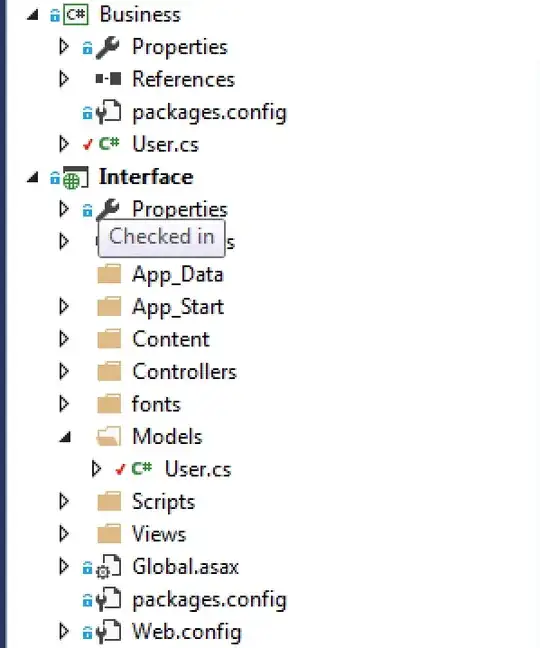I have a solution split into two projects : A class library containing all of my model classes (lets call it Business), and an ASP.Net MVC project.
My Business classes are meant to be generic and work for multiple types of projects. For this reason, they don't contain any data annotations/associations to other classes, only member variables/properties/constructors.
Using the code-first approach, how should I design my ASP.Net models to work with my Business models.
My initial taught was setting my Business classes as partial classes and then overwrite my properties by adding the necessary data annotations/associations. I can't do that because we are dealing with two separate projects.
I was also thinking that I could use inheritance. My ASP.Net models could inherit from the Business classes and I could add my data annotations/associations on top of that. This seems a bit messy and illogical though, as I would need to define all of my constructors in this new subclass.
Is there a smart way of doing this in a cleanly?
EDIT :
My Business classes have validations by throwing exceptions in the property setters. My first design was to create my own custom data annotation that will catch the exceptions thrown by my setters :
public class SetterBasedValidation : ValidationAttribute
{
string m_errorMessage = null;
public SetterBasedValidation(string errorMessage)
{
m_errorMessage = errorMessage;
}
protected override ValidationResult IsValid(object value, ValidationContext validationContext)
{
try
{
Type type = validationContext.ObjectType;
PropertyInfo property = type.GetProperty(validationContext.MemberName);
property.SetValue(validationContext.ObjectInstance, value);
}
catch (Exception)
{
return new ValidationResult(m_errorMessage);
}
return ValidationResult.Success;
}
}
I would then need a way to use my custom data annotation in my ASP.Net model class. This would give me the result I want :
- Keep my Business classes generic
- Use the validations from my setters
- Use data annotations
EDIT 2 :
Here is a basic overview of what my solution setup looks like. My business classes (domain models) contains code looking like this :
public class User
{
private string m_name = null;
public string Name
{
get { return m_name; }
set
{
string name = value.Trim();
if (name.Length > 20 || name.Length < 1)
{
throw new ArgumentException("Name length invalid.");
}
m_name = name;
}
}
}
